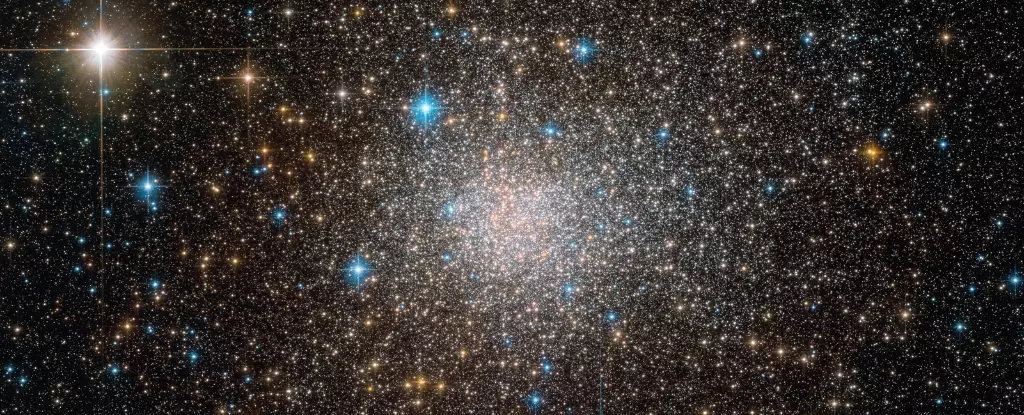The study of cosmic rays has puzzled astronomers since their discovery in 1912 by Austrian-American physicist Victor Hess. Initially, scientists believed that all sources of radiation were confined to Earth until Hess measured high levels of ambient radiation in a high-altitude balloon. This groundbreaking discovery led to the identification of cosmic rays, which are high-energy particles such as protons and electrons accelerated to nearly the speed of light. These cosmic rays traverse interstellar space, encountering magnetic fields that deflect their path, making their origin and behavior difficult to discern.
Terzan 5, a dense star cluster hurtling through the galaxy at remarkable speed, has emerged as a crucial celestial laboratory for studying cosmic rays. This cosmic oddity is home to millisecond pulsars, rapidly rotating and dense stars that act as prolific generators of cosmic rays. These high-energy particles interact with the cluster’s magnetic fields, leading to the production of gamma rays that offer insights into the cosmic ray’s trajectory. The distinctive feature of Terzan 5 is the displacement of gamma rays from the stellar positions, pointing to a mysterious source approximately 30 light-years away.
One of the most significant revelations from the study of Terzan 5 is the elucidation of how magnetic fluctuations influence the trajectory of cosmic rays. As cosmic rays travel along the magnetic tail of the star cluster, their directions undergo changes due to magnetic fluctuations. This altered path eventually leads some of the cosmic rays to point towards Earth, producing gamma rays that can be detected. The time taken for these cosmic rays to align with Earth’s position allows researchers to measure the speed at which magnetic fluctuations affect cosmic ray directions.
By leveraging the unique properties of Terzan 5, researchers have gained valuable insights into the workings of interstellar magnetic fields and the origins of their fluctuations. The ability to observe the impact of magnetic fields on cosmic rays in real-time offers a rare opportunity to test existing theories and models. This newfound knowledge brings scientists closer to unraveling the enigmatic radiation from space discovered by Victor Hess over a century ago.
The findings from the study of Terzan 5 open up new avenues for research into cosmic rays and interstellar magnetic fields. With a clearer understanding of how magnetic fluctuations influence cosmic ray behavior, scientists can refine existing models and devise new ways to study these high-energy particles. The ability to track cosmic rays as they interact with magnetic fields provides a wealth of data that can deepen our understanding of the cosmos and the mechanisms at play within it.
Terzan 5 has proven to be a valuable asset in unlocking the mysteries of cosmic rays and the role of interstellar magnetic fields. By studying the intricate dance between these phenomena, researchers have taken a significant step towards unraveling a century-old cosmic puzzle. As we continue to explore the depths of our universe, the insights gained from studying Terzan 5 will undoubtedly shape our future understanding of cosmic phenomena and the forces that govern our celestial surroundings.


Leave a Reply